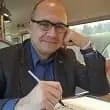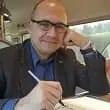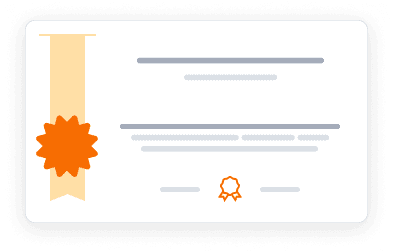This course is part of Paleografía y caligrafía de manuscritos hispánicos..
This advanced course focuses on the materiality of historical manuscripts, exploring paleographic practice, calligraphic techniques, and the physical processes involved in manuscript creation, conservation, and interpretation. Time and space serve as the structural elements around which content about the historical manuscript world is organized. The curriculum combines the identification of processes, the materiality of historical evidence, and methodologies (calligraphic writing, paleographic reading) with exploration of writing places in specific moments of the past. The six units blend historical letter tracing with knowledge of written cultural history, paying special attention to practical aspects of production, conservation, and interpretation. The course features an enhanced focus on conversations and demonstrative classes with renowned experts in specialized centers, who contribute their intellectual and professional expertise from libraries and archives with historical manuscript collections. Technological applications for reading, transcription, interpretation, and interaction with manuscripts are highlighted, representing a significant contribution to digital humanities with important reflections on digital paleography. Students will develop advanced skills in solving particularly difficult transcription cases, identify new professional challenges in manuscript conservation and analysis, combine paleographic competencies (transcription) with calligraphic capabilities (manuscript reproduction), understand historical contexts of manuscript production, and identify letter types used in each historical situation.
4.7
(6 ratings)
Instructors:
Spanish
Español
What you'll learn
Discover the materiality that defines writing and its handcrafted dimension Solve particularly challenging transcription cases with advanced techniques Identify new professional challenges in manuscript conservation, interpretation and digital humanities Combine paleographic competencies (transcription) with calligraphic capabilities (manuscript reproduction) Understand the historical context of manuscript production across different time periods Identify letter types used in various historical situations and their specific characteristics Apply technological tools to manuscript reading, transcription and interpretation Analyze numerical systems, dating methods and computational approaches in historical documents
Skills you'll gain
This course includes:
PreRecorded video
Graded assignments, exams
Access on Mobile, Tablet, Desktop
Limited Access access
Shareable certificate
Closed caption
Top companies offer this course to their employees
Top companies provide this course to enhance their employees' skills, ensuring they excel in handling complex projects and drive organizational success.





There are 6 modules in this course
This advanced course explores the material aspects of historical manuscripts through an integrated approach to paleography and calligraphy. The curriculum is structured around six thematic units that examine various dimensions of manuscript creation, conservation, and interpretation. The first module introduces research methodologies in paleography and calligraphy, addressing singular problems (paleographic micro-challenges) and the professional competencies needed for reading manuscript letters today. It includes micro-projects, digital paleography, and conversations with archives and library professionals, researchers, and special conservators. The second module focuses on manufacturing, production, and conservation processes, reflecting on manual craftsmanship, the differences between manufactum and artefactum, writing supports, and material qualities and responses. The third module examines special collections, specifically the Olmo/Vilas Collection at the Lázaro Galdiano Library, exploring the transition from manuscript to screen and the methodologies for working with special collections. The fourth module investigates learning processes for writing and reading, including manuals, instructions, and first letters, with both theoretical and practical approaches to learning calligraphy. The fifth module covers ecclesiastical paleography and calligraphy, examining church archives, document typologies, and transcription exercises. The final module addresses numbering, dating, and counting systems, exploring the paleography and calligraphy of figures, computation systems, dating methods, and numerical applications in historical documents.
Investigar en paleografía y caligrafía
Module 1
Fabricar, producir, conservar
Module 2
Un espacio para las letras (Colección del Olmo/Vilas). Biblioteca Lázaro Galdiano
Module 3
Aprender a escribir y a leer
Module 4
Escribir la fe
Module 5
Numerar, datar y contar
Module 6
Fee Structure
Individual course purchase is not available - to enroll in this course with a certificate, you need to purchase the complete Professional Certificate Course. For enrollment and detailed fee structure, visit the following: Paleografía y caligrafía de manuscritos hispánicos.
Payment options
Financial Aid
Instructors

5 Courses
Scholar in Archival Science and Written Culture
Dr. Diego Navarro Bonilla, a professor at Universidad Carlos III de Madrid, specializes in archival science, paleography, calligraphy, and the history of written culture. Holding doctorates in Documentation (UC3M) and Conflicts, Security, and Solidarity (University of Zaragoza), he directs the Master's program in Archives, Document Management, and Digital Continuity at UC3M. His research focuses on historical manuscripts, digital paleography, and the integration of archival practices with security and defense intelligence.

5 Courses
Historian and Expert in Archival Science and Intelligence History
Dr. Eduardo Juárez Valero, a professor at Universidad Carlos III de Madrid, specializes in archival science, paleography, Spanish history, and the history of intelligence services. With a doctorate in History from UNED, he also serves as the President and Principal Investigator of the Centro de Investigación de la Guerra Civil Española (CIGCE). His work spans from medieval documentation to the study of espionage and intelligence structures during the Spanish Civil War and beyond.
Testimonials
Testimonials and success stories are a testament to the quality of this program and its impact on your career and learning journey. Be the first to help others make an informed decision by sharing your review of the course.
Frequently asked questions
Below are some of the most commonly asked questions about this course. We aim to provide clear and concise answers to help you better understand the course content, structure, and any other relevant information. If you have any additional questions or if your question is not listed here, please don't hesitate to reach out to our support team for further assistance.



